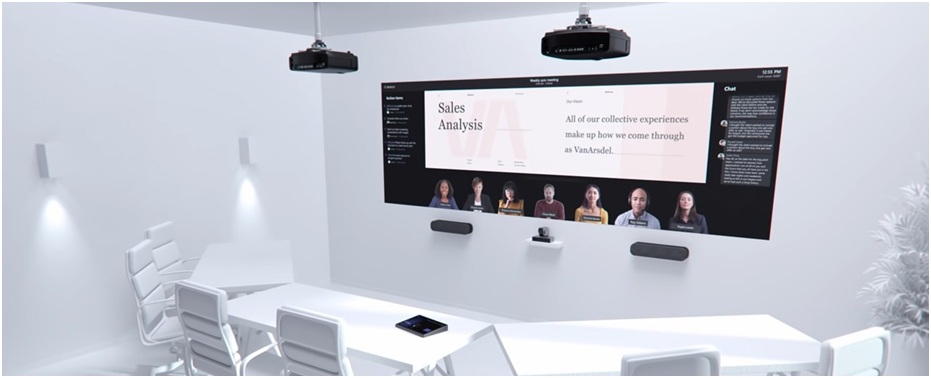
Table of Contents
Embark on a journey through time and technology, as we unravel the transformative power of audio-visual systems in shaping our spaces and experiences.
The impact of AV systems extends beyond communication and entertainment, seeping into design where architects are increasingly incorporating AV technologies into their blueprints to create smart, interactive spaces. These spaces, equipped with integrated AV systems, offer enhanced functionality and aesthetics, transforming how we live and interact with our surroundings.
From smart homes with automated lighting and temperature control to public spaces with interactive displays, AV systems are redefining the boundaries of design and architecture. This fusion of art and technology exemplifies the transformative power of AV systems, underscoring their role in shaping the future of our built environment.
A Trip Down Memory Lane – The Evolution of AV Systems
The journey of audio-visual (AV) systems began in the late 19th century with the invention of the phonograph by Thomas Edison. This marked the birth of a new era where sound could be recorded and reproduced, paving the way for the development of AV systems. Over the decades, these systems have evolved from simple audio devices to complex systems that integrate sound, visual and lighting components.
These systems have transformed both outdoor and indoor spaces, enhancing the way we communicate, learn, work and entertain. From the advent of radio and television to the rise of the internet and digital media, AV systems have played a pivotal role in shaping our society and culture. They have brought about a revolution in the entertainment industry, transformed the education sector and redefined the way businesses operate.
The Symphony of Integration – Elements of an AV System
An AV system is a symphony of various elements that work together to provide an immersive audio and visual experience. These elements include sound, video, lighting, and control systems. Each of these elements plays a crucial role in creating an engaging and interactive environment.
Sound systems, comprising microphones, speakers and amplifiers, ensure clear and audible sound. Video systems, including cameras, projectors and displays, provide high-quality visuals. Lighting systems, consisting of lamps, dimmers and controllers, create the desired mood and ambience. Control systems, such as mixers, switches and software, enable seamless integration and synchronisation of audio and visual components.
These systems are typically used in different settings today, such as conference rooms (AV rooms), classrooms and public spaces. They facilitate effective communication and collaboration (collaboration solutions), making them integral to modern work and learning environments.
The Canvas of Transformation: AV Solutions in Action
AV solutions have been instrumental in transforming spaces and enhancing user experiences. For instance, museums and art galleries have leveraged AV technologies to create immersive exhibits, allowing visitors to interact with art in new and exciting ways.
In the corporate world, AV rooms equipped with advanced collaboration solutions have revolutionised meetings and presentations, making them more engaging and productive. Even in the education sector, AV solutions have transformed traditional classrooms into dynamic learning environments, facilitating interactive learning and improving student engagement.
Using touch and sensor-based interactivity has been on the rise, with the creation of unique “scenes” that can respond to a user’s gestures, movements and voice, and change the environment as they move from day to night. These features create a more realistic and immersive experience, as the user feels more connected to the art and the environment.
AV consultants play a crucial role in the successful implementation of AV solutions. They work closely with organisations to understand their needs and design custom AV systems that meet those needs. From selecting the right equipment to ensuring seamless integration with existing infrastructure, these consultants oversee every aspect of the project, ensuring that the final setup delivers the desired outcomes.
Gazing into the Crystal Ball – The Future of AV Systems
As we look to the future, AV systems are set to play an even more significant role in shaping our experiences and interactions. Emerging trends such as augmented reality (AR), virtual reality (VR) and smart technology are poised to revolutionise AV systems, offering unprecedented levels of immersion and interactivity. As these technologies continue to evolve, they will transform the way we interact with physical spaces, opening up new possibilities for communication, collaboration and entertainment.








